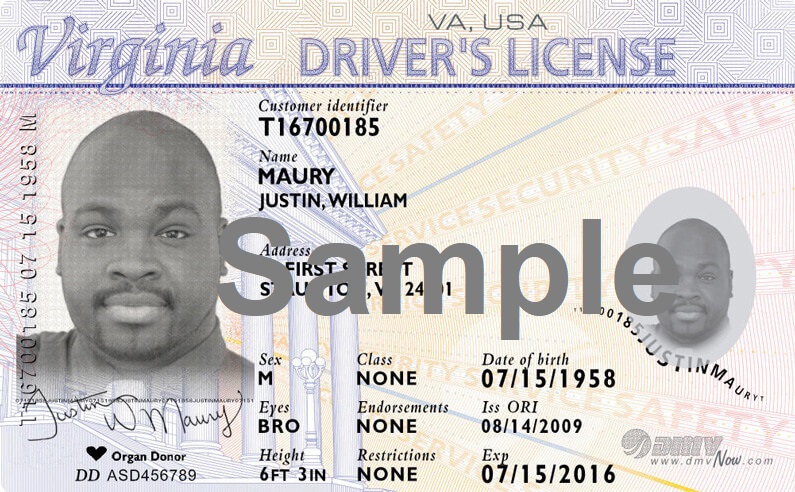Start Your Virginia DMV Practice Test Prep Now
About Virginia Written Test
The Virginia DMV practice test, also known as the Virginia DMV permit test, only has 35 questions, which is fantastic. But if you answer more than five of them incorrectly, you’ll turn as blue as the Blue Ridge. Our DMV diagnostic test challenges you to answer the 15 trickiest questions that Virginians frequently encounter on their driving tests. With our immediate feedback, you’ll be able to identify any knowledge gaps. Areas that need improvement, or Virginia driving regulations that may seem a little odd. In the event that you still have time to study, try your hand at some of our other test questions derived from the Virginia driver’s manual. With a new license and the help of our test preparation, you’ll feel brand-new in Old Dominion.
Some More Information:
If you want to drive on Virginian roads and highways, you must have a driver’s license or learner’s permit. In some cases, you may need to present a driver education certificate at a customer service center if you have failed the exam multiple times. A vision screening is required before any tests, which may also include a road skills test and a two-part knowledge test to obtain a driver’s license. The Virginia Driver’s Manual provides all the necessary information to help you prepare for the tests required to obtain a Virginia driver’s license. The two-part DMV VA written exam gauges your familiarity with traffic regulations, road signs, and safe driving techniques. The Virginia Driver’s Manual is where the information for the DMV test questions came from. Before you can take part two of the Virginia DMV test, you must correctly respond to all 10 of the questions about traffic signs in part one. Your general knowledge is tested in Part 2 by multiple-choice questions. To pass part two, you must respond correctly to at least 80% of the questions.

35 30 86% 151/2
Questions Correct Answers Passing % Min Age to apply
Some of Our Useful Links:

Virginia Driver’s Manual
The Virginia Driver’s Manual is your go-to resource for mastering the rules of the road. This comprehensive guide covers everything you need to know to ace the DMV written test and become a safe, responsible driver. Inside, you’ll find detailed information on road signs and signals, traffic laws and regulations, and essential safe driving practices. The manual also includes guidelines for vehicle safety inspections and the requirements for obtaining a driver’s license.
Available for download on the Virginia DMV website, the manual is an invaluable tool for new drivers. By studying it carefully and taking practice tests, you can ensure you’re well-prepared for the DMV written test. Remember, a solid understanding of the manual’s content is key to passing the test and driving safely on Virginia’s roads.
Test Format and Content
The Virginia DMV written test is divided into two crucial parts: the road signs test and the traffic laws test. The road signs test consists of 10 questions that assess your knowledge of various road signs and signals. To move on to the next part, you must answer all 10 questions correctly.
The second part, the traffic laws test, includes 30 multiple-choice questions that evaluate your understanding of Virginia’s traffic laws and regulations. This section tests your general knowledge of safe driving practices and the rules of the road. To pass, you need to answer at least 80% of these questions correctly. Administered by the Virginia DMV, this test is a mandatory step for all new drivers seeking a learner’s permit.
Road Signs and Signals
Understanding road signs and signals is fundamental to safe driving. These signs provide critical information about road conditions, traffic laws, and potential hazards. There are several types of road signs and signals you need to be familiar with:
-
Warning signs: These signs alert you to potential hazards such as sharp curves, intersections, and changes in road conditions.
-
Guide signs: These signs offer information about road conditions, traffic laws, and directions to help you navigate.
-
Regulatory signs: These signs inform you of traffic laws and regulations, including speed limits and right-of-way rules.
-
Construction signs: These signs provide information about road construction, detours, and other temporary changes in road conditions.
Always pay close attention to road signs and signals and follow their instructions to ensure safe driving.
Safe Driving Practices
Adopting safe driving practices is essential for minimizing the risk of accidents and injuries on the road. Here are some key practices to keep in mind:
-
Follow speed limits: Always adhere to posted speed limits and adjust your speed according to road conditions.
-
Maintain a safe following distance: Keep a safe distance between your vehicle and the one in front of you to allow for sudden stops.
-
Avoid distractions: Stay focused on the road by avoiding distractions such as using a cell phone or eating while driving.
-
Wear a seatbelt: Ensure that you and all passengers are buckled up at all times.
-
Avoid aggressive driving: Refrain from behaviors like tailgating and weaving in and out of lanes.
By practicing these safe driving techniques, you can help ensure a safer driving experience for yourself and others on the road.
Virginia Traffic Laws and Regulations
Virginia’s traffic laws and regulations are designed to promote safe driving and reduce the risk of accidents. Here are some key laws and regulations you should be aware of:
-
Speed limits: The maximum speed limit on highways is 70 mph, while urban roads have a maximum speed limit of 55 mph.
-
Right-of-way rules: Always yield to pedestrians, bicyclists, and other vehicles when necessary to avoid collisions.
-
Seatbelt laws: All drivers and passengers must wear a seatbelt while the vehicle is in motion.
-
Cell phone laws: Using a cell phone while driving is prohibited, except in emergency situations.
Familiarize yourself with these traffic laws and regulations to ensure you are driving safely and legally on Virginia’s roads.